موزه کتابخانه
کتابخانه توماس واتسن (Thomas J. Watson Library) موزهای از ابزارهای مرتبط با کتابخانه ها و کتابداری ایجاد کرده است. اگرچه برخی از آنها همچنان در برخی کتابخانهها کاربرد دارند اما توجه به اینکه این وسایل از رده خارج شده و به «موزه» پیوستهاند احساس جالبی به کتابداران (به ویژه آنها که مثل من، به خوبی آنها را به یاد دارند) می بخشد.
تحلیلها و نوشتههای مدیر خدمات فنی این کتابخانه، آقای جان لیندمن (John Lindaman) ارزش افزودۀ این گزارش و جذاب و خواندنی است.
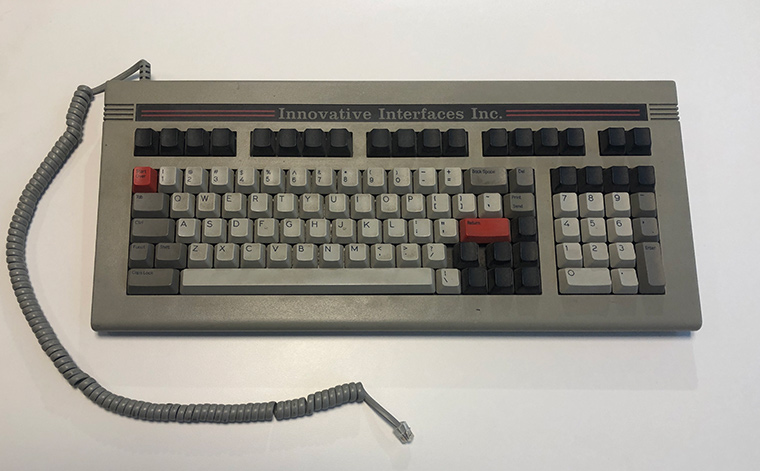
It takes a special kind of confidence to call your company Innovative Interfaces, especially when your innovation seems to be to just take a regular keyboard and make a bunch of the keys not do anything. But this was the dedicated keyboard that came with our first ILS, Anzio, which became Millennium, which is now Sierra. (Now we just use regular keyboards like everyone else. It’s fine.)
There’s a popular misconception that librarians as a profession are conservative. Not politically conservative, but literally conservative—wanting to keep old stuff. Actually, nothing could be further from the truth—we are often on the cutting edge of using new technologies, and always looking for the most efficient, up-to-date way to help our patrons. Thomas J. Watson Library, for example, paid for the Museum’s first T1 line to bring the internet into the building, and our Lita Annenberg Hazen and Joseph H. Hazen Center for Electronic Resources, founded in 1997, was the first dedicated electronic resources center in an art museum. We are forward thinking, technology-savvy, and driven to find the most modern way possible to fulfill our patrons’ needs. However, the dirty little secret is that sometimes the old stuff, while no longer useful, is actually cool.
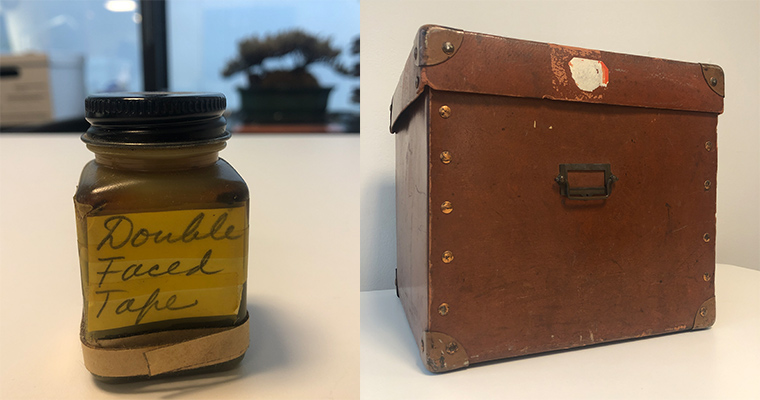
Cool, or at least suffused with ennui
When I started working in Watson Library in 2003, there were still remnants of the old world. Dot matrix printers, green-screen interfaces for our ILS (Integrated Library System, the back end of the online catalogue). We still had a card catalogue as well, although it had not been added to since 1990. As we continued to modernize, many of the artifacts were being discarded, as they were no longer useful. Fortunately, former Watson Librarians Erika Hauser and Dan Lipcan and I decided we should preserve some of this material culture, and the Museum of Obsolete Library Science (MOLISCI) was born. Here are some highlights.
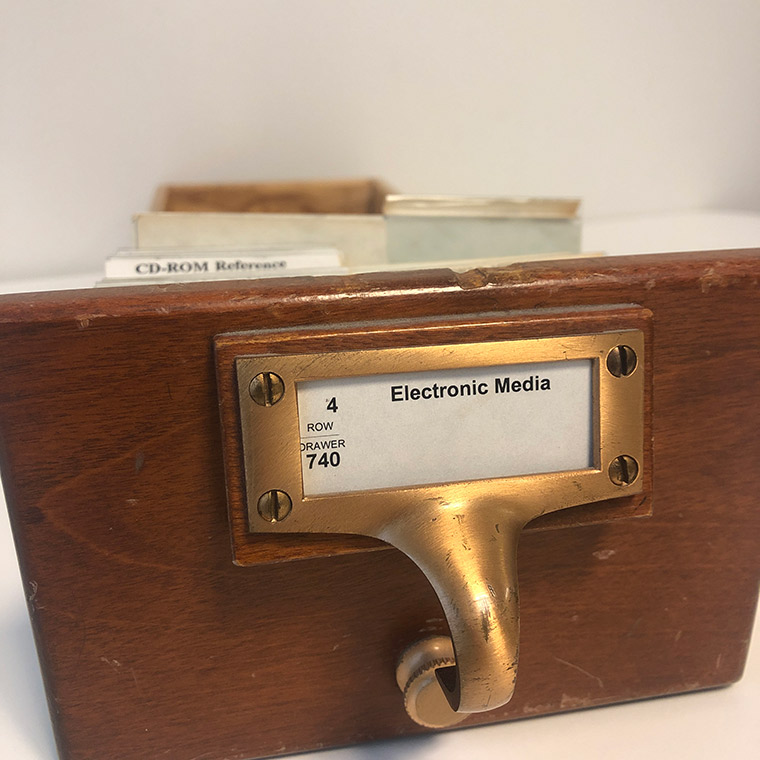
A card catalogue drawer containing cards for electronic resources. Somehow this did not create a rift in the space-time continuum.
Evidence of our early adoption of electronic resources: we still had to make card catalogue cards for them.
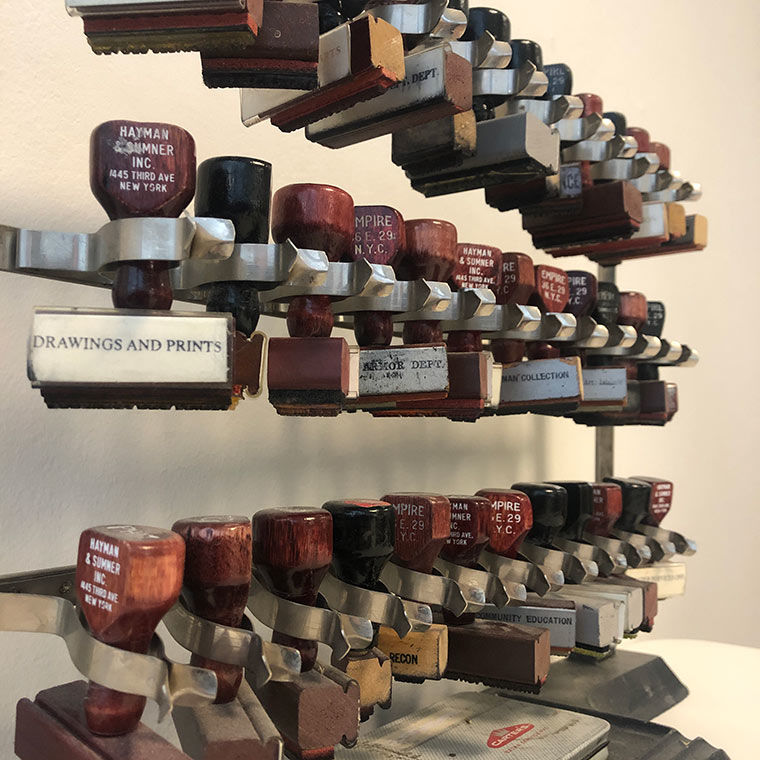
So many stamps
Of course, one hallmark of life in the pre-digital era was the need for lots of stamps to always be stamping things with. Here you can see stamps for different Museum departmental libraries, made by NYC stationers Hayman & Sumner and Empire. There are some mysterious ones whose purpose has been lost to time, such as the one that just says “VATICAN.”

Who doesn’t want to get mail when it’s stamped like this?
As part of an international community of libraries, it was much more exciting to correspond with your colleagues in the days before email.
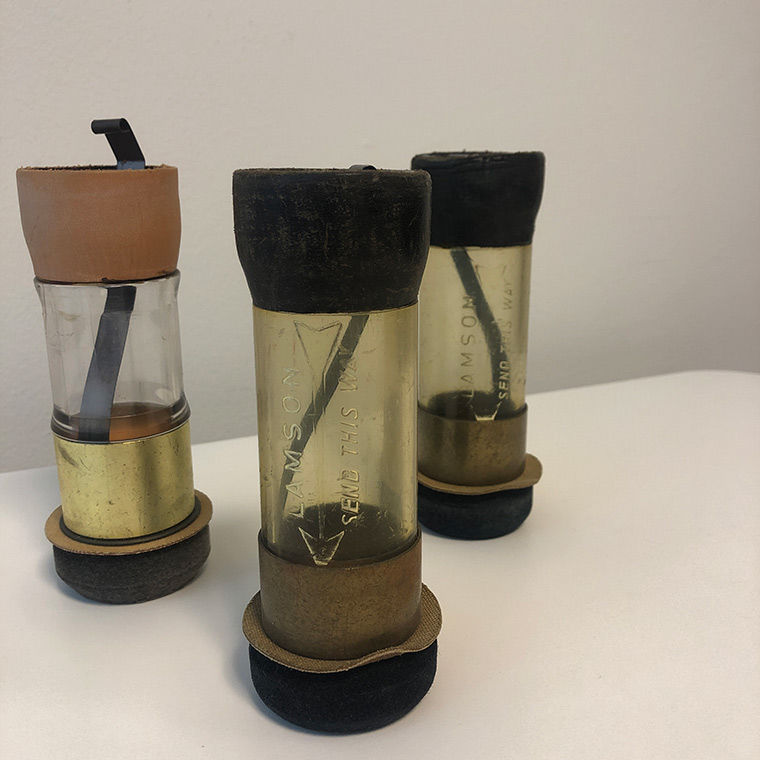
Pneumatic delivery tubes, or, a thing people born after 1990 may never have seen
Most people use pneumatic tubes at the drive-in window of the bank, but they were also used to deliver paging slips in libraries. Apparently, they are actually still in use in many places, but Watson stopped using ours decades ago. According to former technician Ron Fein, who recently retired after thirty-six years at Watson, the pneumatic system was so powerful that the tubes would often shoot out of the door and hit whoever was working at the Circulation Desk, which was usually him.

There was a time when you had to publish a book to tell people what the internet was.
While the number of obsolete books would greatly eclipse our space, some are crucial reference works. How else would you know what Windows 95 was in 1995?
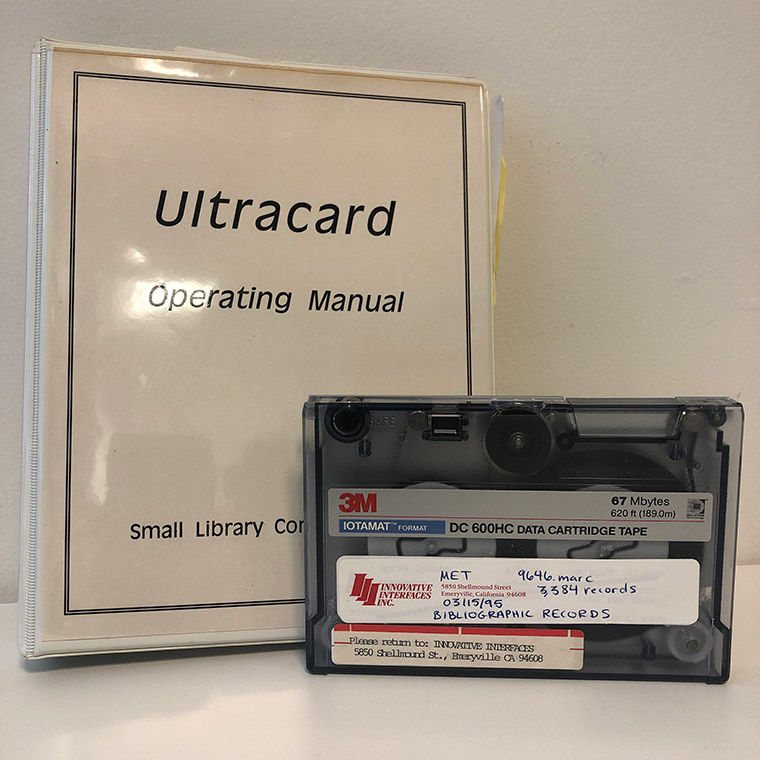
ULTRACARD
I mean, ULTRACARD, but also here’s when our entire bibliographic database of 3,384 records was on this data cartridge backup. Even well into the 2000s, we manually backed up onto data cartridges on a daily basis. (Now it’s over a million records, and thankfully we outsource the backup.)
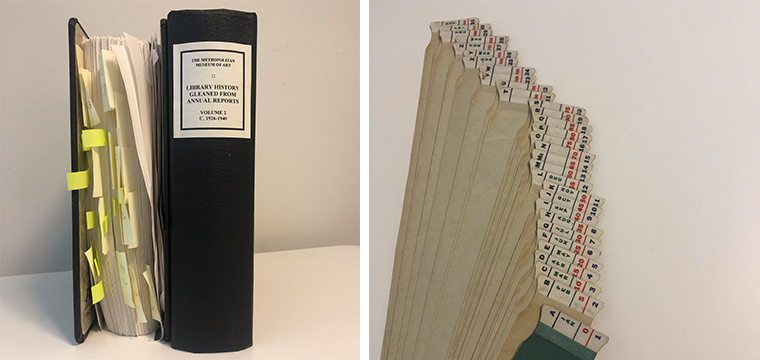
Left: a compendium of library history; Right: a “Sort-All”
Those who forget library history are doomed to put together books of library history copied from annual reports. And the “Sort-All” is perfect for those occasions when you really need to sort a bunch of flat objects such as periodicals by date, which is a problem we all face, right?
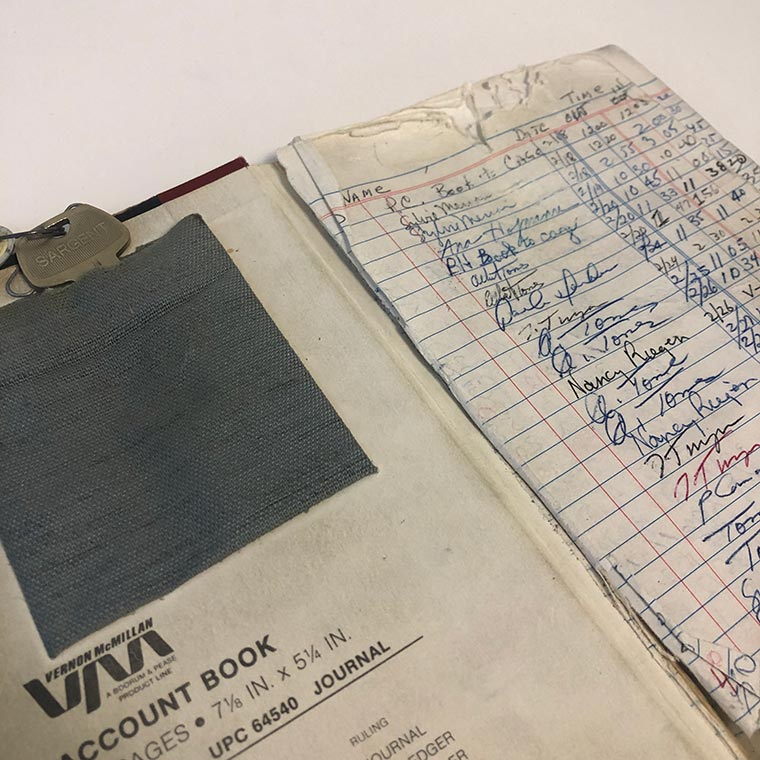
Records of who accessed the rare books
Here’s the book we used to record each person who accessed the rare book storage in the stacks (known as the Bookcage, due to the fact that it is actually a metal cage with books in it). Note the aftermarket key-pocket.

Perhaps there is a future for computers in museums? You’ll have to read it to find out.
As far back as 1968 we were talking about the potential for computers in museums; I’m sure that the fact that Watson Library is named for the Thomas J. Watson who founded IBM is just a coincidence. You can see for yourself—this book is fully available from Watson Library’s Digital Collections and provides a fascinating look at how people in the museum world grappled with this question even in 1968.
Sadly, as our profession moves more and more online, we will have fewer weird physical relics of the past to remind us of how good we have it now, but here at the Museum of Obsolete Library Science we will try to preserve them as best we can. And who knows—by the time we celebrate Met 200 from Watson Library’s new location on the moon, perhaps I will be added to MOLISCI in a charming case; like most of what we have saved, people may not quite remember what I used to be used for, but it will look good in a blog, which will definitely still be a thing.
